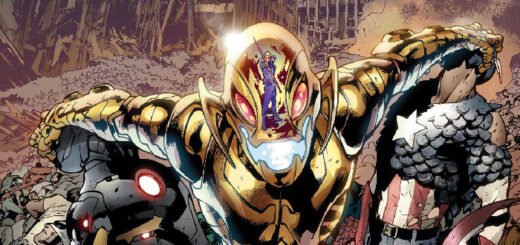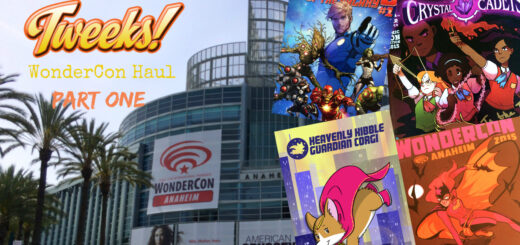Marc Alan Fishman: Loving Age of Ultron
Oh, Avengers: Age of Ultron, how I loved you so! From the moment the pre-movie Ant-Man trailer began to the last second of Whedon-tinted footage befell my eyes, I was a happy camper. Before I roll up my sleeves and dive in to the nitty-gritty details that made the movie for me, I’d be remiss if I didn’t shout from the rafters that this week’s column is chock full of spoilers. So, consider yourself warned. But I digress. Let the love-in begin!
Remembering Where It All Began.
More than once during Age of Ultron, the lingering ideas of Iron Man permeated the plot line. This attention to detail – taking the theme of Tony’s war-mongering past as the driving force for all that has followed – helped create a sequel born of the cinematic MCU, rather than being plucked directly from the proverbial pulp.
That Pietro and Wanda would stare a Stark explosive in the face for several days of mental anguish, would lead them to their nearly permissible antagonistic actions showed a deft hand in the writer’s room. Pair this with the birth of Ultron himself and you have a wealth of villains to combat without it feeling like a bloated mess. I’m looking at you, Spider-Man 3, Amazing Spider-Man, and any other multi-villain movie menagerie. Here, Tony Stark is the spark for the unfurling events. It’s an organic plotline that pays dividends through believable character interaction. Astonishing, no?
Exploring The Details Of The Under-Players.
In the first Avengers movie, Black Widow and Hawkeye were mostly there to flesh out the cast. Believably placed for the ties to S.H.I.E.L.D., Natasha and Clint had their moments, but their placement on the team at large seemed more or less to add a human element to an inhuman team. No, not those Inhumans.
Here in Ultron, our truly human Avengers showcase that it was their humanity that was their superpower all along. Hawkeye the family man and the Black Widow the no-baby-mama helped anchor their gifted counterparts when things got too explody. That we would see Hawkeye leap into battle knowing he leaves a wife and kids behind – because he knows his worth and importance to the team – hit me as a parent right in the feels. As for Natasha revealing a secret shame to Bruce Banner in an effort to prove that her budding feelings for Tony Stark’s best science-bro matched his outer monsterhood with her own perceived faults… well, it was a touching and mature a concept placed in a movie I wouldn’t have pegged as either of those adjectives.
A Master Plan Worthy Of A Mean Child.
Loki, granted the mind-gem by Thanos in an effort to conquer Earth, hatched an invasion pitted against a handful of misguided do-gooders. His machinations included mind-control, sabotage, and ultimately brute force. In contrast, Ultron – very much a child, with more mental capacity and power then he can truly control – opts instead to smash the earth with a big rock. Sure, there’s more to it than that… but really, there isn’t. And it’s a brilliant move. When we first meet him, Ultron seeks to evolve. He sets about his plan not unlike Loki – using mind-control and psychic attack to distract – but when he’s denied his prize, there’s little left to do but start killing. That he was able to create a network of thrusters underneath an entire city in what feel like a few days? Well, I guess that’s what makes him a super-villain.
What I love most about it though, is that the end-game motivations of Ultron end up immature and thuggish when he’s left without the toy he wanted in the first place. We are reminded at the tail-end of the movie that both he and The Vision are very much new to the world. No amount of knowledge can replace wisdom. Again, this is a little detail in a large moving plot that escalates a would-be blockbuster into something that rises above my personal expectations.
And Last, But Not Least… The Promise Of The Future.
When the dust settles, it’s apropo that there’s no schwarma to be had. The Avengers fall into their more natural state. If I might beat this dead horse one last time: the actions presented all felt in line with the characters we’ve seen built in front of us now for the last seven years. Of course Captain America and Black Widow will remain Avengers set to train the first class of new heroes. Tony Stark, tail between his legs, retreats to his vast fortune and his machine shop to ponder where he goes next. Thor returns to his homeland to seek answers, and likely build towards Infinity Wars. Hawkeye gets his well-deserved family time.
And our incredible Hulk? He’ll incredibly sulk for a while, until he’s needed again, I suppose. Given that he turned down the opportunity for a romantic connection in lieu of a martyrs’ life makes sense. He did try to commit suicide only a year or two ago. He’s not ready to move on.
And after a nuanced movie like Age of Ultron? Neither am I. Excelsior indeed.



























